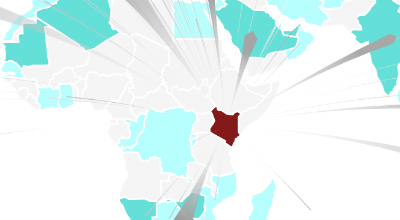
Reposting this here from the original post for Panoply Digital. Returning to a favorite (re: only) theme of mine, education, I was struck recently by the uptick in the number of foreign universities setting up branch campuses in Kenya, Rwanda, Tanzania, and presumably throughout the continent, ideally bolstering domestic capacity for graduates who can push forward development agendas requiring greater and greater access to skilled labor. The schools and university sectors are just strands of a larger neoliberal loosening of public control over what was once the exclusive purview of the public sector, but no need to get too big picture for the time being.
We are seeing some major activity in this space throughout the continent, partly as just a direct response to a lack of supply. There are generally not enough universities to fill the needs presented by a young population; using Kenya as an example, as of 2017 ≈50% of the population is younger than 25. Kenya needs access to skilled workers to capitalize on some of their success in technology, in particular. Whether or not that comes from domestic capacity (either through formal training in universities or from private suppliers or from domestic initiatives) or through some sort of mix of education and immigration remains to be seen. I see the immigration model as more a US/UK/European one: at least in the US with ≈14% of its population being immigrants and that 14% contributing way beyond the average population, this model has allowed federal and state governments to walk back any real commitments to improving any sort of public education.
It is a trend we are seeing a bit on the continent, particularly in Kenya (some decent data on global tertiary students movements here from UNESCO). Students are moving in and out, and higher education itself is doing the same. Although data on the intake is elusive, Kenya is exporting less and less of its students abroad (roughly 14,000 now, a number that is generally on the downturn), suggesting some mixture of access to education and opportunity professionally. Some good and bad takeaways here: Kenya is exporting its universities to neighboring Tanzania and Rwanda, importing universities from a variety of places (Korea, China, US, etc.) and sequestering them in Konza Techno city, a $14 billion boondoggle of a project that screams of similar Asian initiatives (it is a Korean funded initiative so it will be largely a Korean constructed initiative).
This is a mixed bag, for sure. The doors open and with the legitimate operators, the shady ones flow right in. Development projects that should serve to stimulate domestic capacity and employment go to foreign construction firms. Local control over curriculum becomes muted, removed from its local context into something generic (global education, whatever that might refer to). So providing advanced skills for a more advanced employment market somehow gets severed from the local context in which this market is operating.
While initiatives in local educational systems are sometimes encouraging, they are partly responses to larger geopolitical issues: autonomy, identity, and the totalizing rhetoric of connectivity and personalization that most edtech or foreign university announcements drone on about. In short, please stop saying disruptive and just build something coherent in concert with local systems.
Take for example, digital or open education, MOOCs, and the like. A lot of this is framed as the flattening of hierarchies: everyone is equal. This is presented as a universal good, something that ‘liberates’ domestic students from social structure and hierarchy, boosting individual freedoms and reducing centralized controls over what can and what cannot be done” (Selwyn). Liberation, individualization, and freedom become the tent poles on which the globalized education systems are raised. This is all well and good, of course, but nowhere in this global education do we see an address of particular needs at a local level, in Kenya or elsewhere. Preparing Kenyan students for Kenyan employment, preparing Kenyan teachers for teaching Kenyan students, to develop the Kenyan economy to respond proactively to larger regional markets, an agile Kenyan curriculum that responds to Kenyan needs (but encouragingly we do see pushback). All we see is the disruption of a local context.